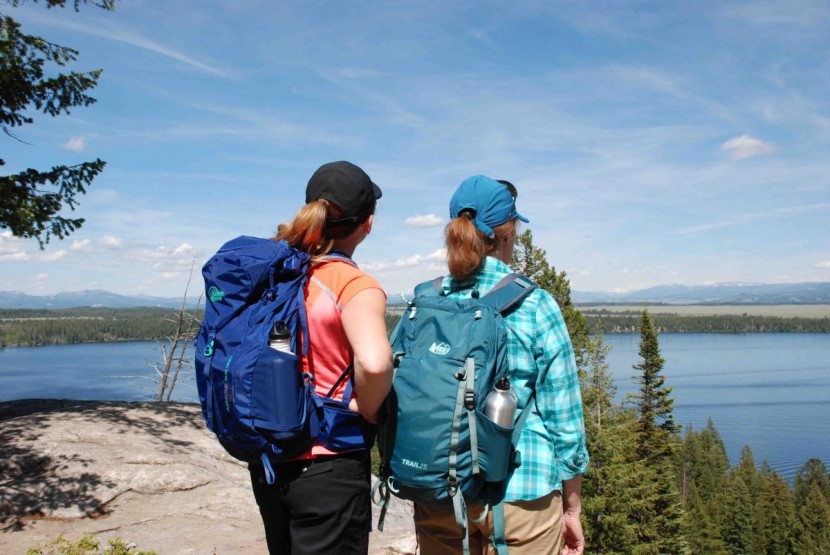We took our array of test packs and put them to the test over years' worths of adventures. We hiked in the Nevada Spring Mountains, the Wyoming Tetons, Colorado's Fourteeners, did some sightseeing in Iceland and Yellowstone, went on long exploratory hikes in the Bighorns, and even some historic trails back east in the Adirondacks. After many days on the trail and countless miles, we scored each pack on the various categories below based on our experiences and side-by-side comparisons.
Comfort
We tested and scored this metric in various ways. Firstly, we simply went hiking. We used each pack on both long and short hikes, with light and heavy (for a daypack) loads, and kept notes on how comfortable we felt in each one. We also examined each bag's padding (or lack of), hip belt, attempts at ventilation, and whether there were any annoying features or pressure points that impacted our comfort. We also sweat tested, movement tested and fit tested based on baseline parameters that were consistent across all daypacks,
Versatility
While hiking in each pack we used and explored the usefulness of all of the various features each one had available. Then we rated them both for the number of feature options available and also how versatile they were for the many possible activities you might find yourself using a daypack. For example, we liked the quick stow method for our trekking poles on the Osprey models, but it wasn't a comfortable method to hike with over long distances. Sometimes less is more too, as a pack with a ton of extra webbing or attachment points can quickly become a Christmas tree of hiking gear.
Weight-to-Volume Ratio
We compared the weight of each pack and took note of how the differences on the scale added up to differences on our backs or on the pack's usage. We also calculated each's bags weight-to-volume ratio — how much the bag could hold per oz of weight. We also explored the different methods used to make technical packs lighter, like less padding and thinner materials, and whether those weight savings were worth it from a comfort or durability perspective. For lightweight and ultralight models, we evaluated the trade-offs between usefulness and comfort for those precious few ounces and added packability.
Ease of Use
To test and score this metric, we considered several factors. First, we gauged the overall usability of each bag. We stuffed them full of all our hiking essentials and scored how easily we were able to keep things organized and accessible. Then we took into consideration whether the packs are available in one single size or multiple sizes. We also considered how adjustable each one is on our bodies. Having an adjustable torso length and longer hip belts and shoulder straps earned a pack more points. Load lifter straps that actually lifted the load were also given due credit.
Construction Quality
Finally, we scored each pack for durability. Of all of the categories that we rated these packs on, this was the least “hands-on,” as there was no way we could get several years worth of hikes on each pack during the time we had. What we did do was look for any immediate signs of wear or weak points on each model, research online user reviews for each one and look for durability issue patterns, and then compared the deniers of the bags and whether they had a double or thicker bottom or not. While a thicker material is not necessarily a sure sign of longer durability, in our experience a thinner denier is more likely to wear through or catch a snag than a thicker one. In addition to this, we performed stress tests by dragging each bag a consistent distance to compare fabric durability, and hosed each bag down for a full minute to compare water permeability.







